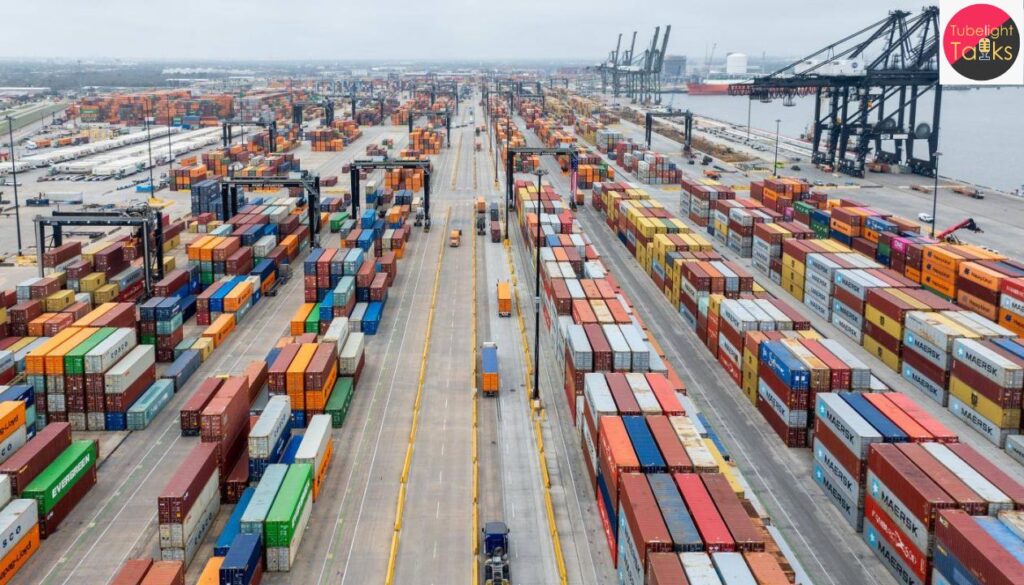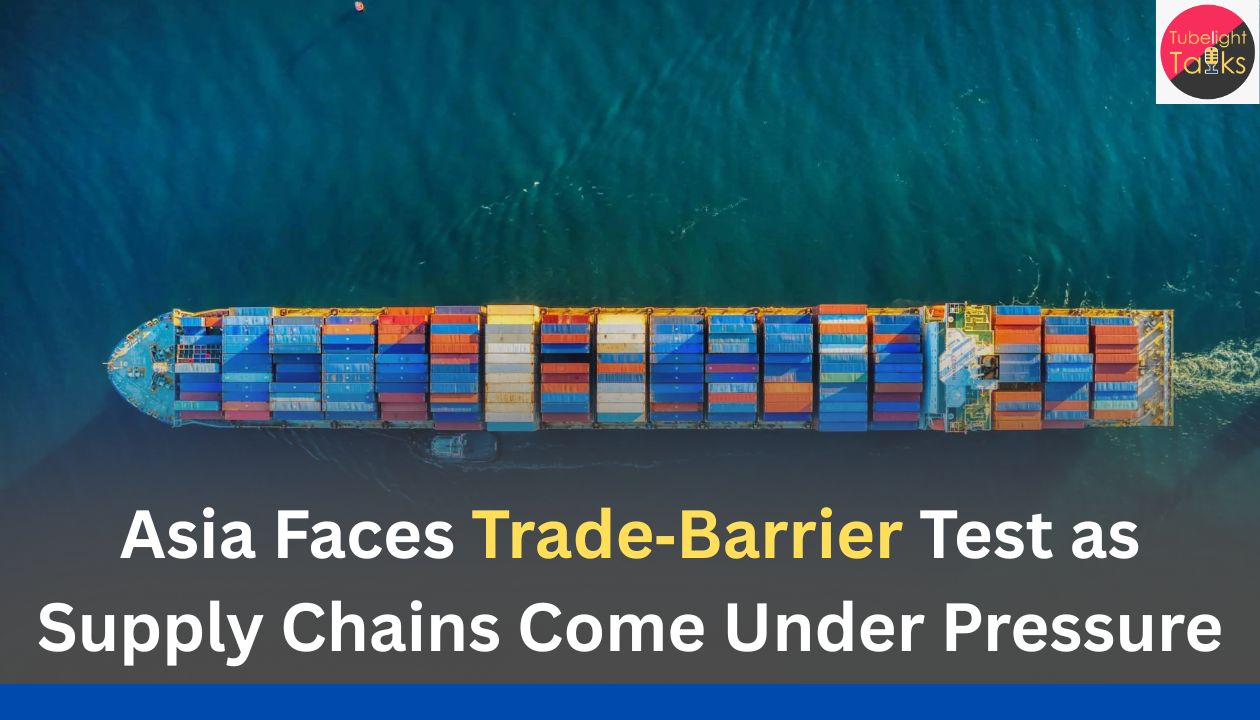Asia Faces Trade Barrier: The International Monetary Fund, in its latest Asia‑Pacific outlook, has urged countries in the region to lower non‑tariff trade barriers, deepen intra‑regional trade and diversify economic dependencies as a defence against mounting external risk—especially given the increasingly thorny U.S. trade posture.
Although Asia is projected to continue growing—at about 4.5 % in 2025—the IMF warns that mounting trade uncertainty, reliance on external markets for final goods and weak regulatory harmonisation threaten longer‑term resilience.
Why Asia’s Supply Chains Are Vulnerable
High Integration of Intermediate Goods, Low Final‑Goods Regionalisation
IMF data show that approximately 60 % of Asia’s exports consist of intermediate goods traded within the region. Yet only about 30 % of its final goods production and trade are intra‑Asian.
This gap means many Asian economies depend heavily on Western markets for final‑goods demand.
Tariff Pressure and Trade Uncertainty
Industry front‑loading of exports ahead of U.S. tariff threats has boosted recent growth, but the IMF warns this is not sustainable. Trade‑policy uncertainty remains high and could dampen investment and growth.
Non‑Tariff Barriers (NTBs) and Fragmented Trade Architecture
While tariffs are visible, NTBs such as licensing, standards, local content rules and customs delays have proliferated, especially post‑pandemic. The IMF emphasises lowering these as a key structural reform.
What the IMF Recommends
Simplify and Harmonise Trade Rules
The IMF says Asian governments should streamline trade policy, align standards and reduce regulatory duplication that hinders intra‑regional trade.
Boost Regional Value Chains
By shifting production and trade hubs within Asia (rather than relying solely on external markets) countries can build resilience against external shocks like tariffs or shipping disruptions.

Strengthen Domestic Demand and Productivity
While trade is important, the IMF also highlights that boosting domestic consumption, improving productivity and reforming finance will support more stable growth.
Implications for Regional Economies
East & Southeast Asia Strategy Shift
Countries like China, Japan, South Korea may increasingly focus on regional trade partners, shifting from export‑heavy models to more integrated regional supply chains.
South & Southeast Asia Opportunities
Emerging economies in South Asia and Southeast Asia could benefit if they reduce trade barriers and position themselves as alternative manufacturing and export hubs, but reforms will matter.
Risks of Inaction
Failure to reform could lead to slower growth, higher trade‑costs and increased vulnerability to policy shocks or supply‑chain bottlenecks. The IMF projects growth could slow further to about 4.1 % in 2026 if headwinds persist.
Also Read: India’s Trade Position Reinforced: Goyal on Strategic Autonomy
A Perspective of True Progress
In the context of satgyan—the true knowledge taught by Sant Rampal Ji Maharaj—this push for deeper regional integration and resilience is more than economics. It invites thought on how trade and supply‑chains serve human welfare, dignity and community. When production, policy and infrastructure are aligned not just for profit but for shared upliftment, the result is systems built for people—not just for markets.
What to Watch Next
Policy Announcements on NTB Reduction
Which Asian governments will publish concrete plans to reduce NTBs, harmonise standards and strengthen regional trade?
Trade Data and Re‑Routing Signals
Look for movements in intra‑Asian trade volumes, shifting sourcing away from traditional hubs and signs of diversification away from external markets.
Corporate Supply‑Chain Investments
Will manufacturers accelerate “Asia‑plus‑one” strategies, build new production hubs, or adjust inventories and sourcing due to the policy push?
FAQs: Asia Supply‑Chain Risk & IMF Guidance
Q1. What does the IMF mean by “non‑tariff trade barriers”?
They are regulatory or administrative obstacles—such as customs delays, licensing systems, differing standards or local‑content rules—that make trade costlier or slower even when tariffs are low.
Q2. Why is Asia vulnerable to supply‑chain shocks?
Because a large share of exports are intermediate goods shipped within Asia, but many final‑goods markets remain external, exposing the region to demand shifts and policy changes. (See around 60% vs. 30% figures)
Q3. What benefits could deeper regional trade bring?
The IMF estimates that deeper integration could boost Asia’s GDP by roughly 1.4 % over the medium term, and ASEAN economies by as much as 4%.
Q4. What did the IMF warn regarding growth?
Growth for Asia is projected at 4.5 % in 2025 but could slow to 4.1 % in 2026 if trade‑policy uncertainty and external shocks persist.
Q5. What steps can firms take in response?
Firms can diversify sourcing, engage in intra‑regional supply‑chains, reduce over‑reliance on single markets, improve logistics and monitor policy/regulatory shifts in key markets.










